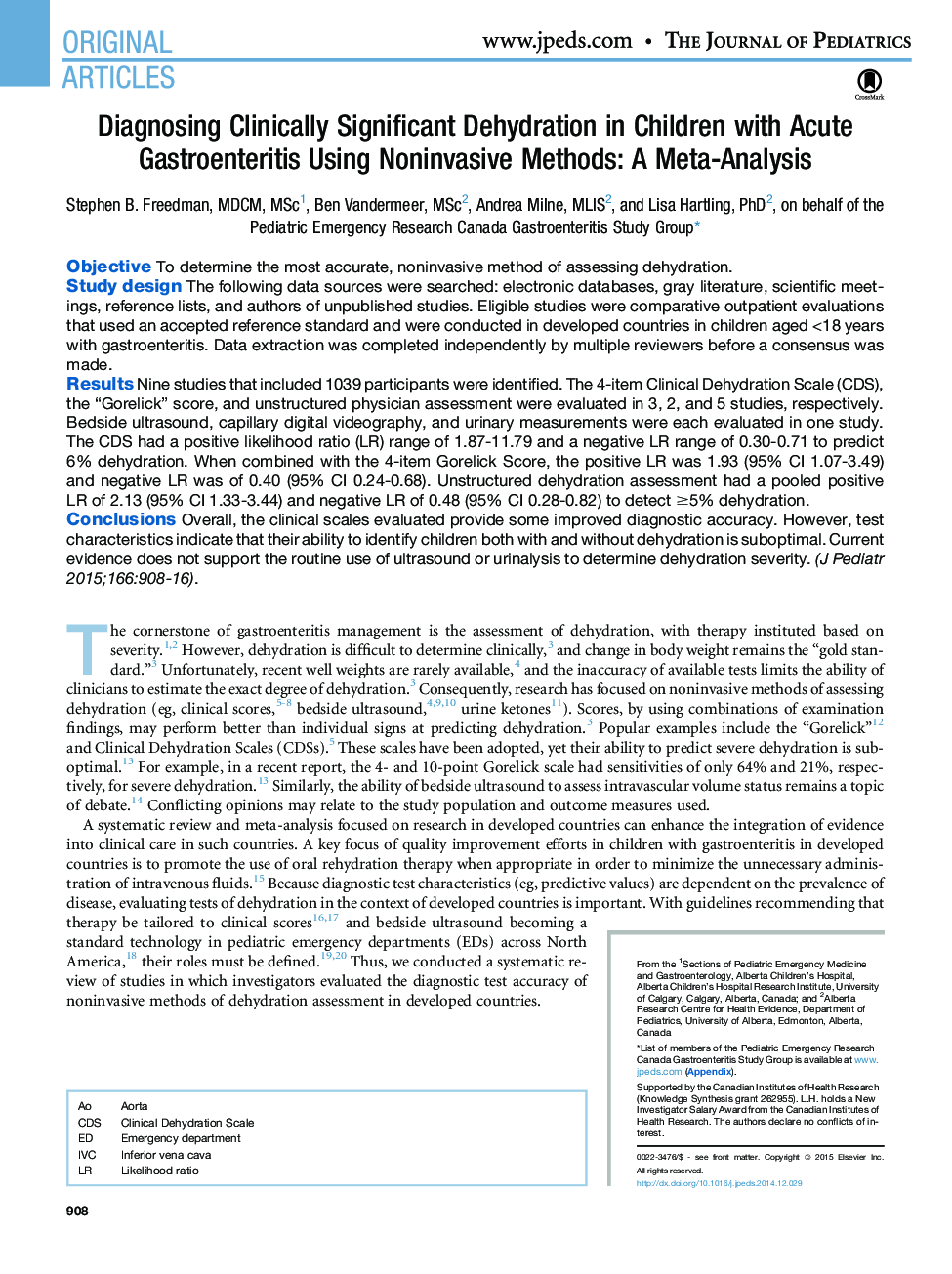| Article ID | Journal | Published Year | Pages | File Type |
|---|---|---|---|---|
| 6221500 | The Journal of Pediatrics | 2015 | 15 Pages |
ObjectiveTo determine the most accurate, noninvasive method of assessing dehydration.Study designThe following data sources were searched: electronic databases, gray literature, scientific meetings, reference lists, and authors of unpublished studies. Eligible studies were comparative outpatient evaluations that used an accepted reference standard and were conducted in developed countries in children aged <18 years with gastroenteritis. Data extraction was completed independently by multiple reviewers before a consensus was made.ResultsNine studies that included 1039 participants were identified. The 4-item Clinical Dehydration Scale (CDS), the “Gorelick” score, and unstructured physician assessment were evaluated in 3, 2, and 5 studies, respectively. Bedside ultrasound, capillary digital videography, and urinary measurements were each evaluated in one study. The CDS had a positive likelihood ratio (LR) range of 1.87-11.79 and a negative LR range of 0.30-0.71 to predict 6% dehydration. When combined with the 4-item Gorelick Score, the positive LR was 1.93 (95% CI 1.07-3.49) and negative LR was of 0.40 (95% CI 0.24-0.68). Unstructured dehydration assessment had a pooled positive LR of 2.13 (95% CI 1.33-3.44) and negative LR of 0.48 (95% CI 0.28-0.82) to detect â¥5% dehydration.ConclusionsOverall, the clinical scales evaluated provide some improved diagnostic accuracy. However, test characteristics indicate that their ability to identify children both with and without dehydration is suboptimal. Current evidence does not support the routine use of ultrasound or urinalysis to determine dehydration severity.
